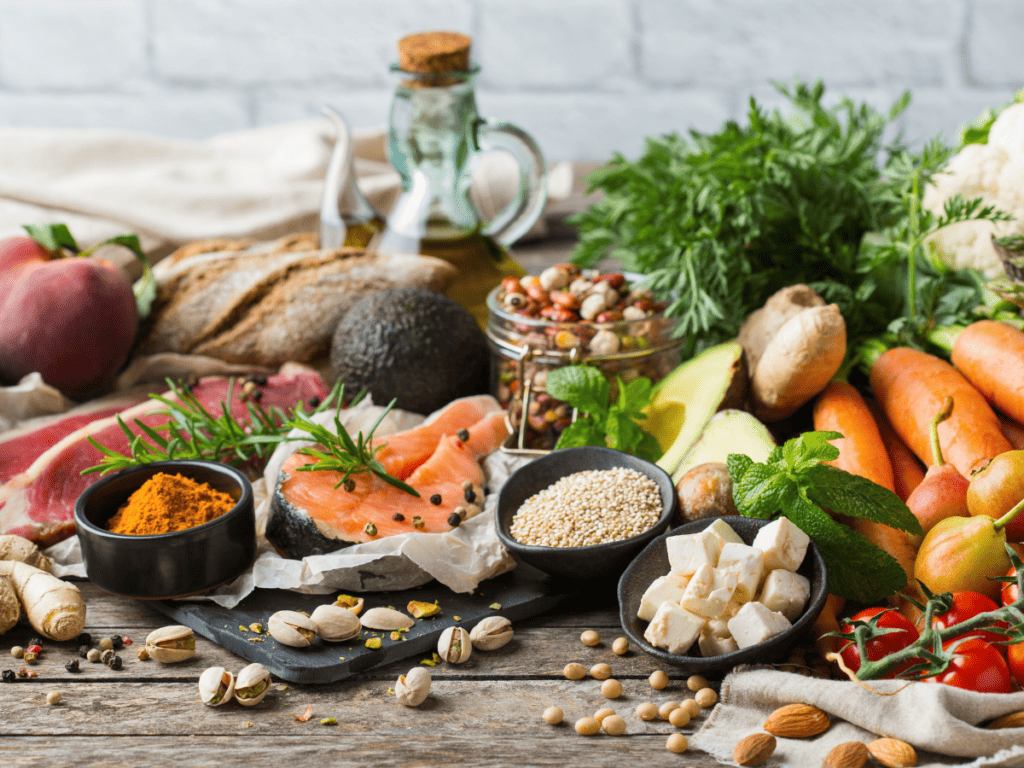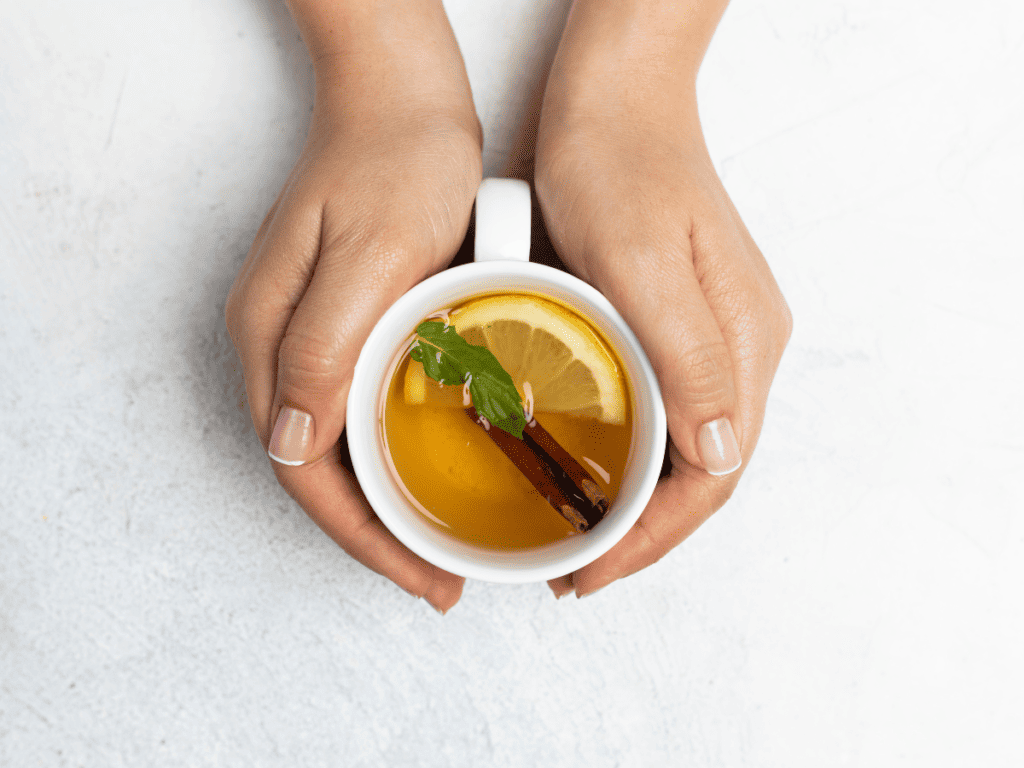I’m so glad you asked! There’s not much I love talking about more than clean living, which is simply using your lifestyle to cultivate wellness.

While the phrase “clean living” can take you down many different routes on the internet, the definition within the wellness space focuses on habits like clean eating, spending time in nature, reducing your toxic load and keeping your stress level in check.
The idea of clean living lines up really well with the ideals and values found in Blue Zones communities. The Blue Zones are known for their whole food diet (often Mediterranean), naturally active lifestyle and the value they place on community.
The practice of functional medicine is also a fundamental part of clean living. Functional medicine is, after all, the science of creating health.
While modern medicine does a great job of treating and managing disease, the American model often lacks in the incorporation of disease prevention via lifestyle, which is the easiest and cheapest tool we have at our disposal.
What is a Clean-living Lifestyle?
To sum it up, a clean-living lifestyle generates wellness by utilizing healthy food, sunshine, nature, exercise and community while also limiting things that generate disease like processed and inflammatory foods, stress, toxin and sedentary lifestyles.
Is Clean Living Old-Fashioned?
I often think of clean living as getting back to the basics and some parts of it can feel old-fashioned. One hundred years ago, people spent much more time outdoors, had little access to technology, ate more organic foods and were more connected to their community.
These days we spend 90% of our time indoors, and that’s just an average. Some people are inside even more than that. This means more exposure to poor indoor air quality and less physical activity.
This is often coupled with more scrolling on social media or binge-watching TV which is linked to an increase in anxiety and depression.
So, yes, in many ways clean living can feel like going back in time 100 years or moving to a different part of the world. We live in a society that demands convenience but rarely is the convenience healthier.
How Do I Transition to Clean Living?
1.) Start Paying Attention
If you start looking at your lifestyle and considering what may be encouraging disease, you’ll find lots of potential action steps. Some examples may be not taking advantage of fresh air and nature, eating highly processed foods, having sweetened foods and drinks regularly or using products that contain toxins.
2.) Clean Eating is Key to Clean Living
When I got into clean living, I started with what went in my body then what went on my body then what was near my body (home, environment). If you’re new to clean living, usually the most powerful place to start is with diet.

Start cooking at home more often and buying organic food as often as you can afford it. The EWG’s Clean 15 is a great place to start with organic grocery shopping. The 2024 list should be out soon, but these lists are fairly similar from year to year,
Perfection is a recipe for failure IMHO. I aim for 90% clean food as a rule of thumb. If you’re new to clean eating, check out my Simple Guide to Clean Eating.
3.) Filtered Water is a Must for Clean Living
Some type of a water filter is a must. Here is the reverse osmosis water filter that I recommend, but this can vary depending on which contaminants are in your area. You can look that up on the EWG Tap Water Database and determine which water filter is best for your situation.
4.) Learn About Supplements and Herbs
Utilizing supplements, herbs, teas and other simple home remedies can really amp up your wellness strategy. Learning the basics of herbal remedies can strengthen your immune system and reduce your intake of medications, which often come with unwanted side effects.
The simple yet powerful habit of adding green tea to your diet is a great place to start.
5.) Clean Up Your Personal Care Routine
This could be everything from your hand soap to eye shadow. Anything that comes in contact with you essentially becomes part of you on a micro level.
A good resource to research personal care products is to look them up on the EWG Skin Deep Database. It’s not perfect, but it’s a good start. We often think the little things don’t matter, but science tells us that something as tiny as an ingredient in our soap can affect our microbiome, which is vital to keeping us healthy.
Women especially tend to come in contact with a large number of toxins in their personal care/beauty routine. Hair dye, hand sanitizer, deodorant, tanning lotion, dry shampoo and perfume can all be problematic to name a few.
See the personal care section of my blog for clean swaps for your favorite personal care products.
6.) Create a Non-Toxic Kitchen
When it comes to kitchen items, eliminate as much plastic as possible and opt for glass and quality stainless steel when possible. Consider your cookware and your dinnerware too. Here are some posts to help you reduce toxins in the kitchen.
7.) Create a Non-Toxic Wardrobe
Clothing is another area to consider, Clothing is made with toxic synthetic materials then treated with unhealthy dyes. Opt for natural fibers when possible and look for certifications like GOTS and OEKO-TEX.
Beware of additional promises like flame resistant and anti-wrinkle (this is achieved with formaldehyde) and similar. You can read in detail about creating a non-toxic wardrobe here.
8.) How Can you Clean Up Your Environment?
Your environment includes things like your air quality, which is affected by literally everything in your home (e.g. furniture, carpet, paint, cleaning products, etc.)
The easiest and cheapest way to improve your air quality is to open your windows as often as you can. Even in you live in a busy city, outdoor air is almost always better than indoor air with a few exceptions, of course. Another simple thing to do is purchase an air purifier.
This is the Levoit Purifier I have and recommend. We’ve on our 2nd one, and they are fairly quiet, durable and seem to do a great job although admittedly I have not tested our indoor air quality. Air purifiers are good blanket measure for allergens and toxins.
Your environment also includes your yard where you want to be ultra cautious with pesticides and learn about natural ways to manage pests.

9.) Nature, Nature, Nature for Clean Living
The beauty of clean living is how almost every aspect of wellness is connected and intertwined. Things that are healthy are almost healthy in more than one way. Nature is probably the most robust example of that.
Nature offers fresh air, soil full of healthy microbes, sunshine, relaxing sounds and more. These things can improve our physical and mental health. Did you know that getting morning sunlight in your eyes in the mornings can improve your sleep?
If you follow Dr. Andrew Huberman of Stanford, you definitely already know that. Natures benefits are endless and people who spend more time outdoors are healthier overall.
10.) Consider Your Relationships
One of the core pillars of the Blue Zones, which are communities where people regularly live 100 (healthfully), is community. Science tells us that having quality relationships, a sense of purpose and being a part of a community makes us healthier on all levels.
Being married is linked to a longer life span and having a sense of community is linked to reduced anxiety and depression.
Conclusion
Transitioning to a clean-living lifestyle is a process that may take years and is always evolving as you learn more. As I mentioned above start with what goes in your body then on and around it.
If you haven’t given much thought to how you live, you will likely notice you feel better almost immediately. Be sure to follow along as you begin or continue on your clean-living journey.